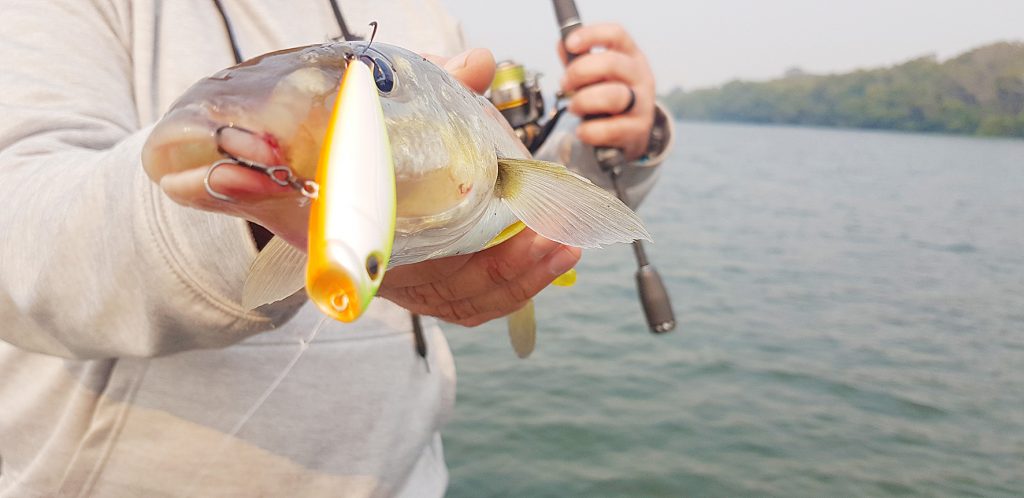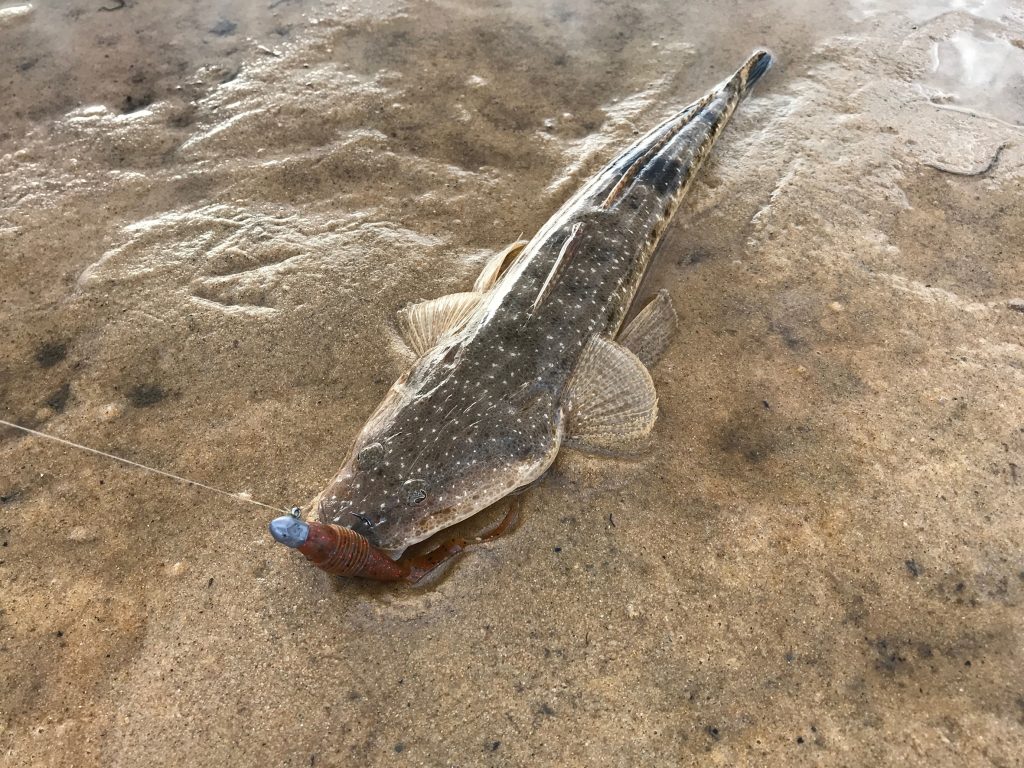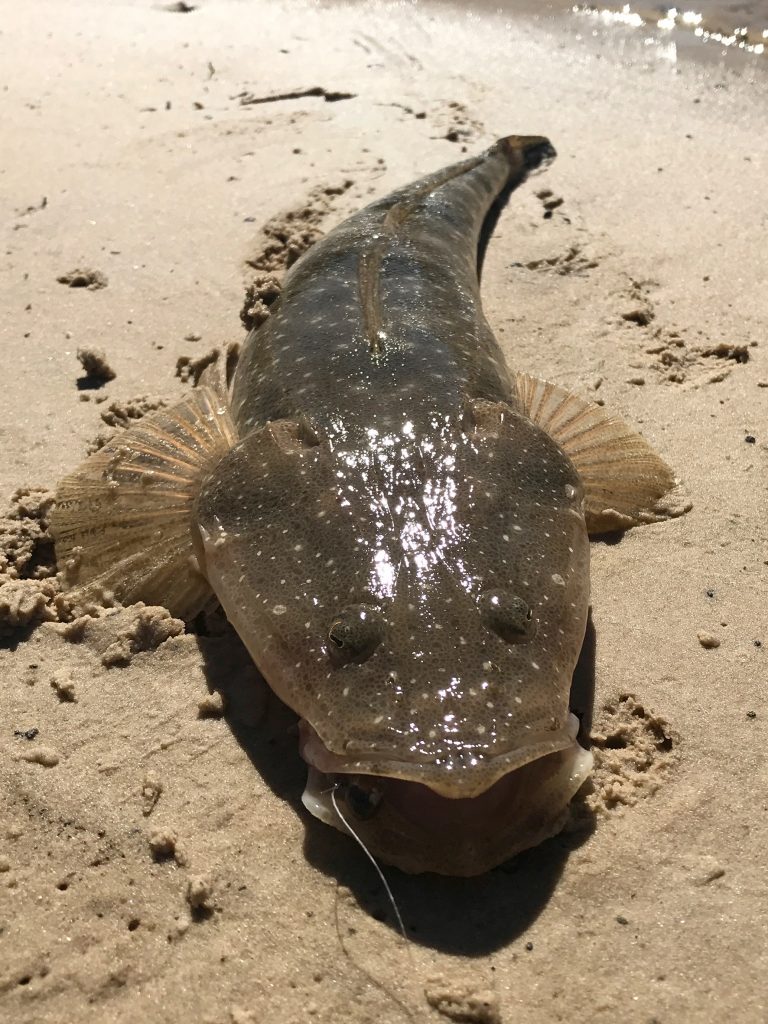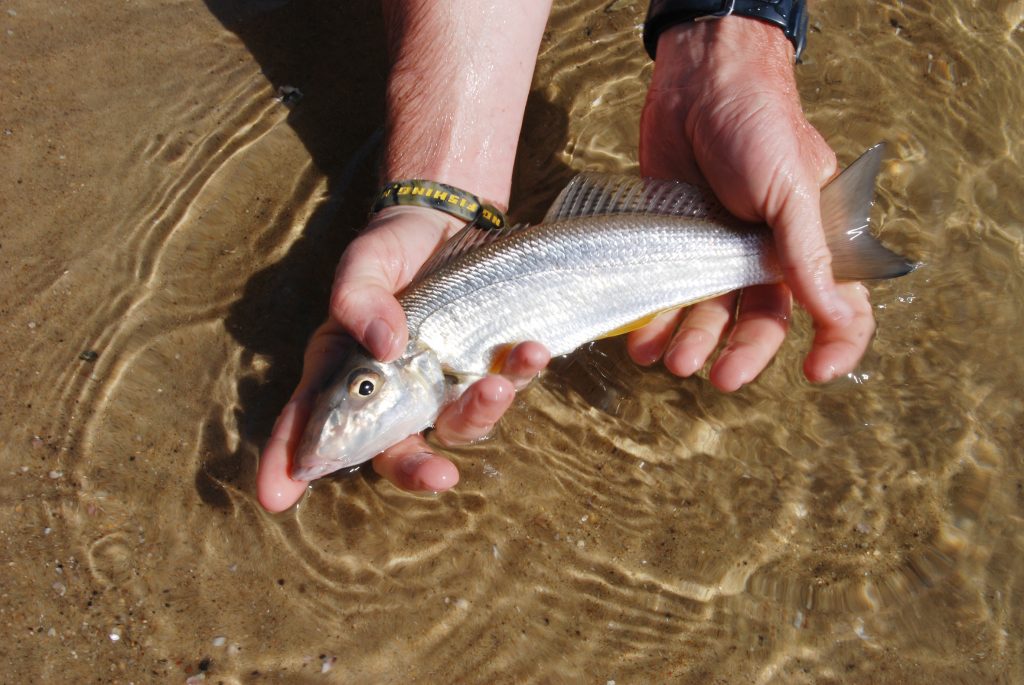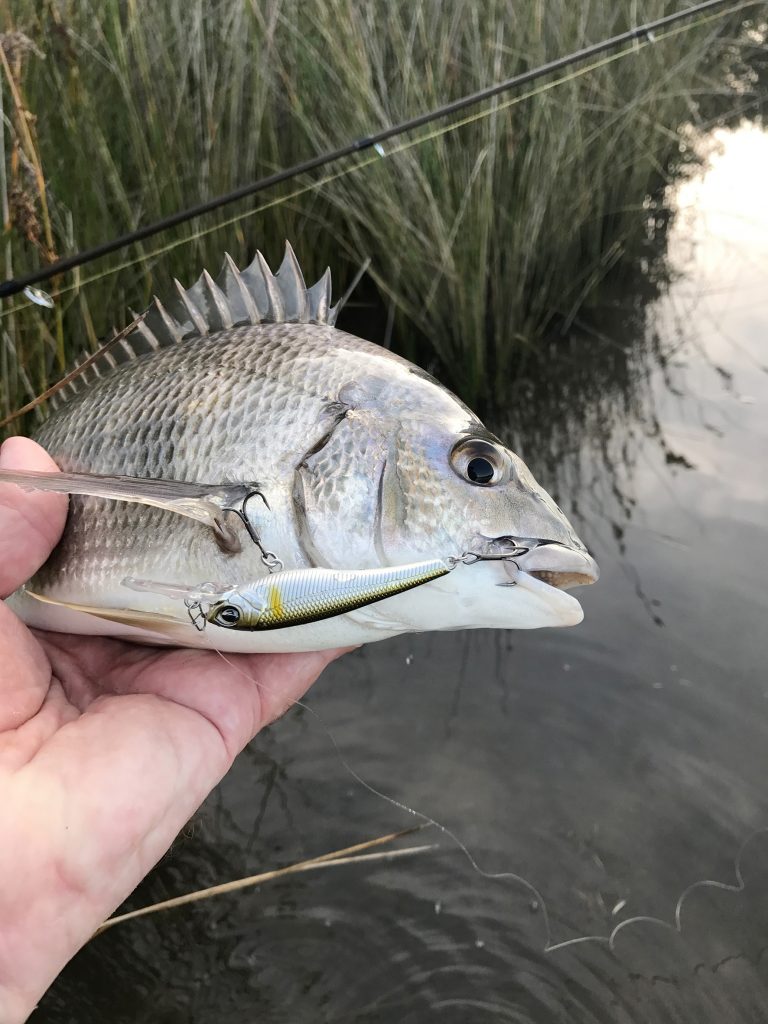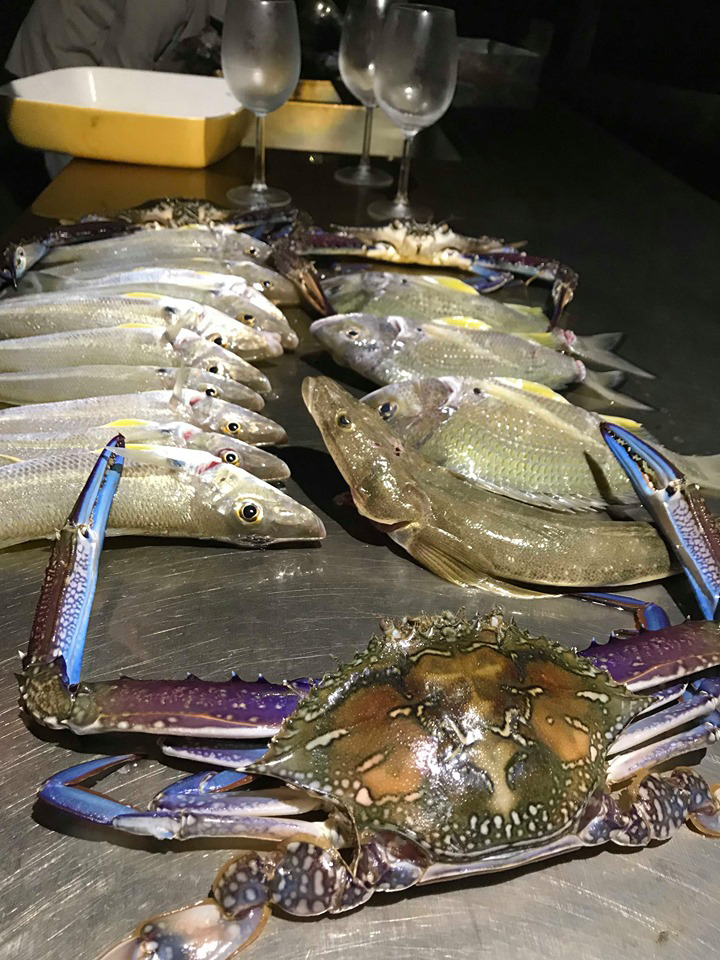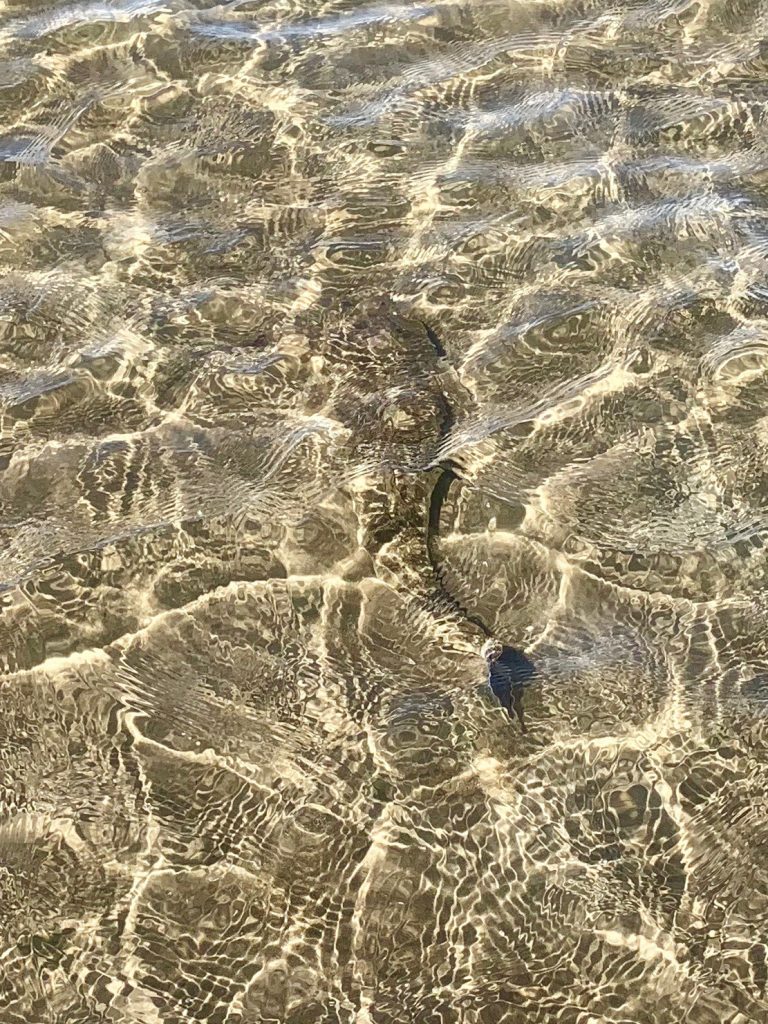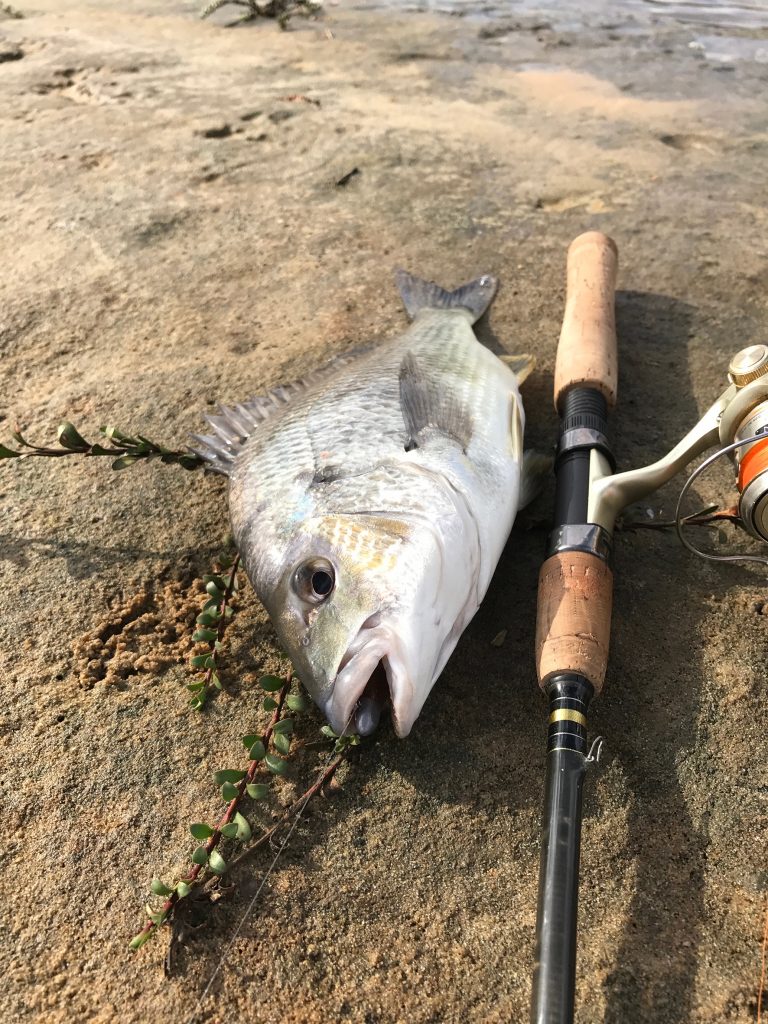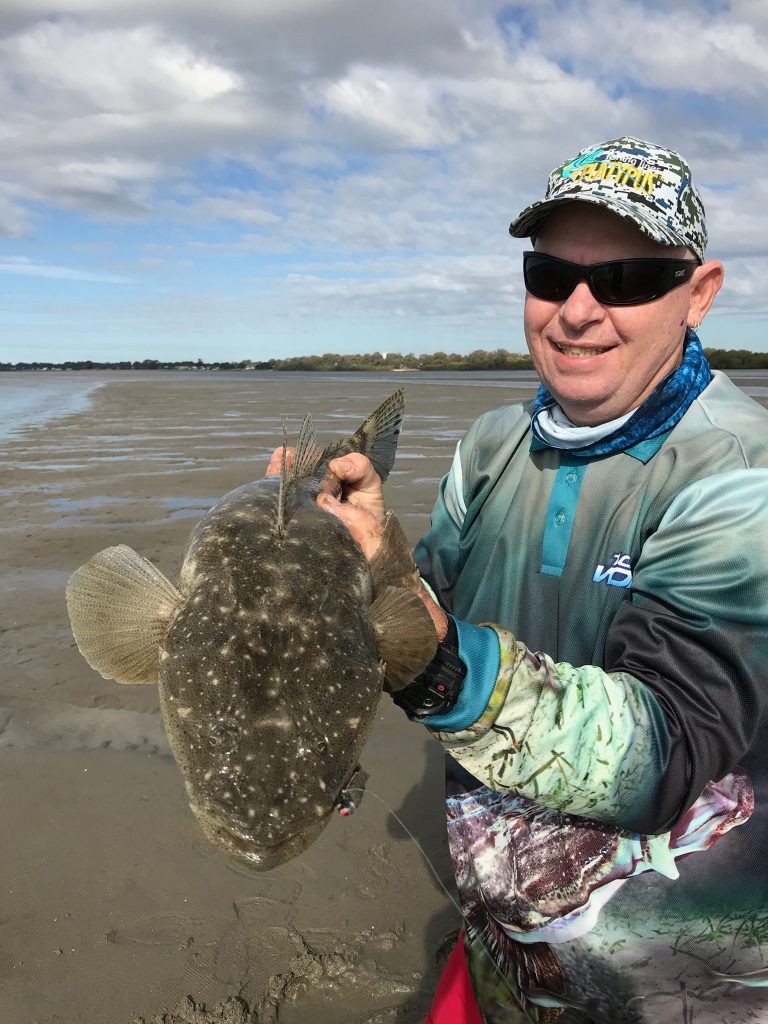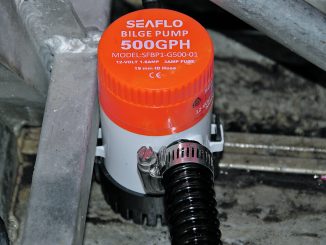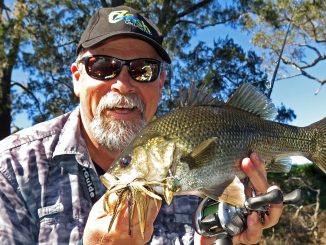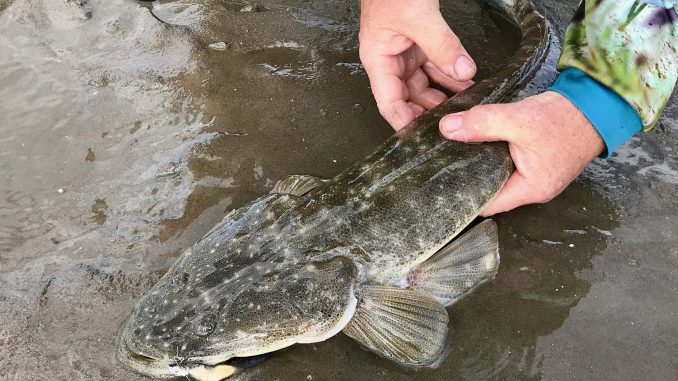
by Bob Thornton •
One of the great things about South East Queensland and Northern NSW is that you really don’t need a boat to experience some great fishing. It’s true that land-based fishing elsewhere in the country can turn up some pretty fantastic results, but SEQ and Northern NSW’s beautiful, sandy and crocodile-less flats would rival the best.
Walking tidal flats is where many anglers cut their teeth on lure fishing, and even now with so many people fishing these areas, it’s still possible to find your own patch of flat to spend a few hours.
While many of us may have started our fishing journey flicking lures across the sand flats for bread and butter species like bream, whiting and flathead, we still come back to fish these same areas time and time again.
Why? Because it’s accessible, requires very little tackle, and it provides a good fishing fix! It’s a popular pastime at this time of year when quick, easy and kid-friendly is on the menu, and it’s a great way to score a feed while you’re at it.
Sure it’s not as glamorous or untouched as the flats fishing in the north of the state, but what could beat parking the car, walking to your spot without constantly looking over your shoulder for crocodiles, catching a feed for you and the family, and walking back into town to grab an ice-cream?
For those yet to try walking the flats, or anyone wishing to hone their skills further, let’s dive in and check it out.
WHERE TO GO
Finding suitable flats to fish is probably the most difficult part, and it helps to be able to identify the things that attract bread and butter species.
Flats can form anywhere along the tidal section of a river, creek, coastal lake, inlet, harbour or bay, so there’s a lot of water to rule out.
As a general rule, I won’t fish a flat that doesn’t have at least some yabby holes on it. Yabbies are an important food source for a range of predators, including whiting, and given that many bigger predators also eat whiting, it just makes sense to fish where the yabbies are.
The second thing I look for is some changes in depth. Small undulations, holes, drains, and even the drop-off back into the main channel are things that give predators a reason to be there. They allow the fish to hide from prey and predators of their own, and to seek shelter from the current.
Speaking of current, it’s definitely something else I like to have on a flat. Tidal movement brings everything alive, and ambush predators like flathead can lay buried in the sand while food is brought to them. Hunting species, like bream, whiting and trevally, will use the current to move around and find the small animals that have become exhausted fighting against it.
Something that is not necessary but preferred, especially when chasing flathead, is some structure. Sporadic patches of weed, rock or shale are sufficient structures for flathead, as these things too hold small forage species like crabs, baitfish, prawns and other small morsels.
Of course, you want your chosen flat to be wadable, and anything deeper than waist deep becomes uncomfortable. I like to find a flat with shin to knee-deep water, with deeper water over a metre deep within casting range. The bigger the flat, the longer you can spend exploring and catching fish!
WHAT TO BRING
Essentials
To me, the gearing up aspect is what makes this form of fishing so attractive. You can get away with carrying so little gear, you sometimes don’t even need a bag!
Apart from a rod and reel, if I had to list the ‘bare essentials’ and why they’re essential, I could do it in one sentence, so here goes: A pair of pliers for unhooking fish safely, 4-6 different lures to cover your options and some spare fluorocarbon trace if you break off. That’s it.
It’s worth remembering though that with summer upon us, water and adequate sun protection also become essential.
Optionals
There are a few things that I’ll also bring along to make the whole process smoother.
One thing I like to bring with me, especially if chasing flathead, is a small trout net, which I keep clipped to my backpack. Dealing with flathead in knee-deep water while they trash with trebles in their mouth can potentially end up a disaster, so the net helps me to keep some distance while I unhook it. Some people may prefer a lip grip for the same reason.
An old school wading bag is a good idea if you intend to keep fish, as it saves having to run back to an esky way up on the bank every time you catch a keeper. The good old Alvey Surf Wading Bag is still fantastic for this job, however there’s other brands producing products like these now.
A measuring tool that you can fold away easily will also be essential if you’re keeping fish. Alternatively, you can do what I’ve seen plenty of old timers do, and mark the legal lengths of your target species with a marker pen on your bag. It’s simple, but it’s clever!
TACKLE
Tackle for the most part can be kept fairly light, unless you want to specifically target larger flathead. Most bread and butter fish you’ll cross paths with in the shallows can be easily subdued with light estuary tackle.
For rods, any spin rod in the 1-5kg range will handle most things, including big flathead if you take it easy.
With reels, it’s not necessary to have the latest and greatest in spin reel technology, so anything from in a 1000-3000 size is fine.
For all my flats work I use braid for the simple reason that I can cast light offerings further – a huge advantage when fishing this shallow – and most braids between 2-10lb will suit this work. Some bream tournament anglers use light fluorocarbon straight through to minimise the shadow cast by the line, but I prefer the extra bit of distance I get when using braid.
On the end of my braid I like to use a fairly long leader of fluorocarbon, and again, anything in the 2-10lb range will suffice. If big fatties are on the cards it may be worth upsizing your leader, but in doing so you’ll probably prevent a lot of enquiries smaller fish. I prefer to fish as light as possible to maximise my bites, even if it comes at the risk of losing a bigger flathead.
With your lures, you don’t need to bring a whole boatload with you, but it does pay to have a few different types just to keep your options open. To cover my bases, I’ll usually have some topwater presentations like poppers and small stickbaits, some small bream-style crankbaits, some minnow-profiled jerkbaits, and some lightly-weighted soft plastics. If you organise a box with 2-3 of each, you’re more than ready to hit the flats. Just keep in mind that the majority of fish in these shallow areas are used to eating small prey items, so keeping your presentations under about 50mm is a good idea. Again, if flathead are your target, you can go bigger than this, but it will come at the expense of bites from bream and whiting.
KNOW YOUR TECHNIQUE
When I go out for a flats session, I usually fish in a way that doesn’t limit me to any one species, so instead of focussing on species, I’ll look at some techniques.
Bibbed lures
Small crankbaits are what I would call the ‘all-rounder’ of flats fishing. They can imitate many different food items, and they will catch just about anything.
Because you’ll only be fishing in water around 2ft deep or shallower, there’s no need to use a hardbody with a giant bill, because all this will do is make the lure dig up lot of sand and swim sideways. Instead, I like to get a small crankbait or jerkbait that dives to around 2ft. This will mean the lure makes contact occasionally with the bottom, stirring up sand and mud and starting predators from afar, but still swims fairly true.
How you work your hardbodies can vary. With small traditionally crankbaits I prefer a steady wind where I can feel occasional contact with the bottom, throwing in a pause here and there to mix up. These presentations will catch everything on the flats, but are particularly favoured by bream. If you feel the tell-tale ‘tap-tap’ of a bream trying to eat your lure, just keep winding until you feel them eat it properly and let the weight of the fish load up the rod. It’s very simple! This will work particularly well around rubbly bottom.
When using longer minnow-styled hardbodies, I like to work them with twitches and paused. Several rips to get it kicking up sand before a few second’s pause drives flathead crazy, especially if the lure suspends.
Soft plastics
Softies are a good trick to have up your sleeve, and definitely one of the main players on the flats. They are very versatile, and are the sort of lure you can fish different structures and depths.
Generally speaking, light weight of 1/8oz or under will be fine, especially in such shallow water. If you want to fish into some deeper holes, going up to a 1/4oz may be a good idea, especially if there’s a bit of wind and current around, making contact with your lure difficult.
In terms of shapes and sizes, there are really no rules. Small creature baits that imitate yabbies will obviously work wonders on any flats-dwelling predators, especially whiting. Flukes, jerkshads or flick baits are a great choice if there are prawns around, and will fool anything that’s in the mood for these small crustaceans. Traditional paddle-tail shads or grubs are great for either slow winding or hopping along the bottom, and would be my number one choice if I was targeting flathead.
Again, sticking to 50mm and under is the way to go to cover your bases.
Topwater
Fishing topwater presentations is without doubt the most fun way to fish the flats, and given that the surface is only inches from where most of the fish are sitting, they work pretty well too! If the area you’re fishing is experiencing a run of prawns, you’d almost be silly to want to start with anything else.
It was about 15 years ago that throwing small poppers, stickbaits and bent minnow type lures over sandy flats became a popular technique for whiting, and today it’s still a very effective way to fish. I’ve found that fishing this way tends to select out bigger whiting, and I doubt anyone would complain about that. Of course, when people started having success on the whiting, many noticed that other fish didn’t mind smacking a small piece of plastic off the surface either, however each species seems to prefer a slightly different retrieve.
Whiting seem to prefer a constantly moving bait, so for a popper that would be small pops with the rod tip while gradually winding up the slack, a tight and fast walk-the-dog with stickbaits, and just constant twitches for the bent minnow. Whiting have great eyes, so pausing the bait only gives them a chance to look at it. If you start getting boils behind the lure or notice several whiting shadowing your bait, it can even pay to quicken your pace!
Bream on the other hand can be very responsive to a pause, but not always. It can be beneficial watching how the fish react to the lures, and being such a clear environment this is something you can do quite easily, especially if you’re wearing good polarised sunglasses.
Flathead are another fish you’ll have to read on the day, but in general I’ve found they aren’t too fussy. In fact, so user-friendly are the flathead sometimes that you can miss a strike, watch the flathead settle back down to its ambush position, re-present your offering and watch the fish have another go.
With small pelagic fish such as trevally and tailor, faster retrieves tend to get more attention, but, like flathead, if they are really in the mood, you really only need to get something to them – there’ll look after the rest!
Flies
If you like fly fishing, or even want to learn, this is a great place to break out the wand. A 3-6wt with a floating line, a light tippet and a small Clouser minnow is all you need. With no sink time and generally nothing to obstruct your casting, it makes for pretty easy fly fishing. If the wind get’s up, I generally just turn so the wind it at my back and it will carry the flyline out further on delivery.
Fly fishing is a particularly deadly technique on flathead, as they can’t resist something natural on the flats, however bream and whiting will also chew a fly, especially a smaller one. While Clousers are many peoples’ go-to on flathead, changing to a Crazy Charlie or Vampire style pattern will get the attention of bream and whiting as well.
I like to keep contact with the bottom when I fish flies over the flats, however it’s not necessary.
SOME TIPS
When I fish these areas, I like to take a few steps between each cast so that I’m covering water. That’s the trick when you’re flats fishing, just keep covering water until you come across a productive area.
Unlike with other types of flats fishing, most of the time you’re not sight fishing. Given that most of your foray is either small and moving quickly or buried well in the sand, you won’t catch a glimpse of most of them before setting the hook. If you do though, it’s always worth a cast, but I usually find if I can see them, they can see me, and all of a sudden eating isn’t the first thing on their mind.
High tide is the best time to be fishing up shallow, as fish will use the opportunity to get into the shallows where they can round up bait. As the tide drops, however, it isn’t the time to be heading home. Low tide sees fish falling back into little channels, and fishing into these areas can still see some very productive sessions.
Wading in SEQ and Northern NSW is far safer than doing so further north, however these areas aren’t without their dangers. Stingrays, while fairly placid, can react violently if stepped on. In lowlight conditions or murky water, I prefer to shuffle rather than walk, so if I do make contact with a ray, it will be a gentle nudge; you want to avoid stepping on them! As a general rule, keep looking down and watch where you’re putting your feet.
FEELING FLAT?
If you’re looking for a fishing fix that requires little gear, little clean up and can produce some solid feeds, why not give estuary flats fishing a go? It can be done all year round, at any time of the day, and is easy enough for small children and ham-handed adults to pick up.
Lures to try
Plastics
ZMan 2.5” Slim SwimZ
Keitech Easy Shiner 2”
Berkley Gulp! Crabby 2”
Hardbodies
Daiwa Pro Double Clutch IZM 75mm
Atomic Hardz Crank 38 Mid Dive
Ecogear SX48
Topwater
Rebel Pop-R 50mm
OSP Bent Minnow 76F
Bassday Sugapen 70mm

